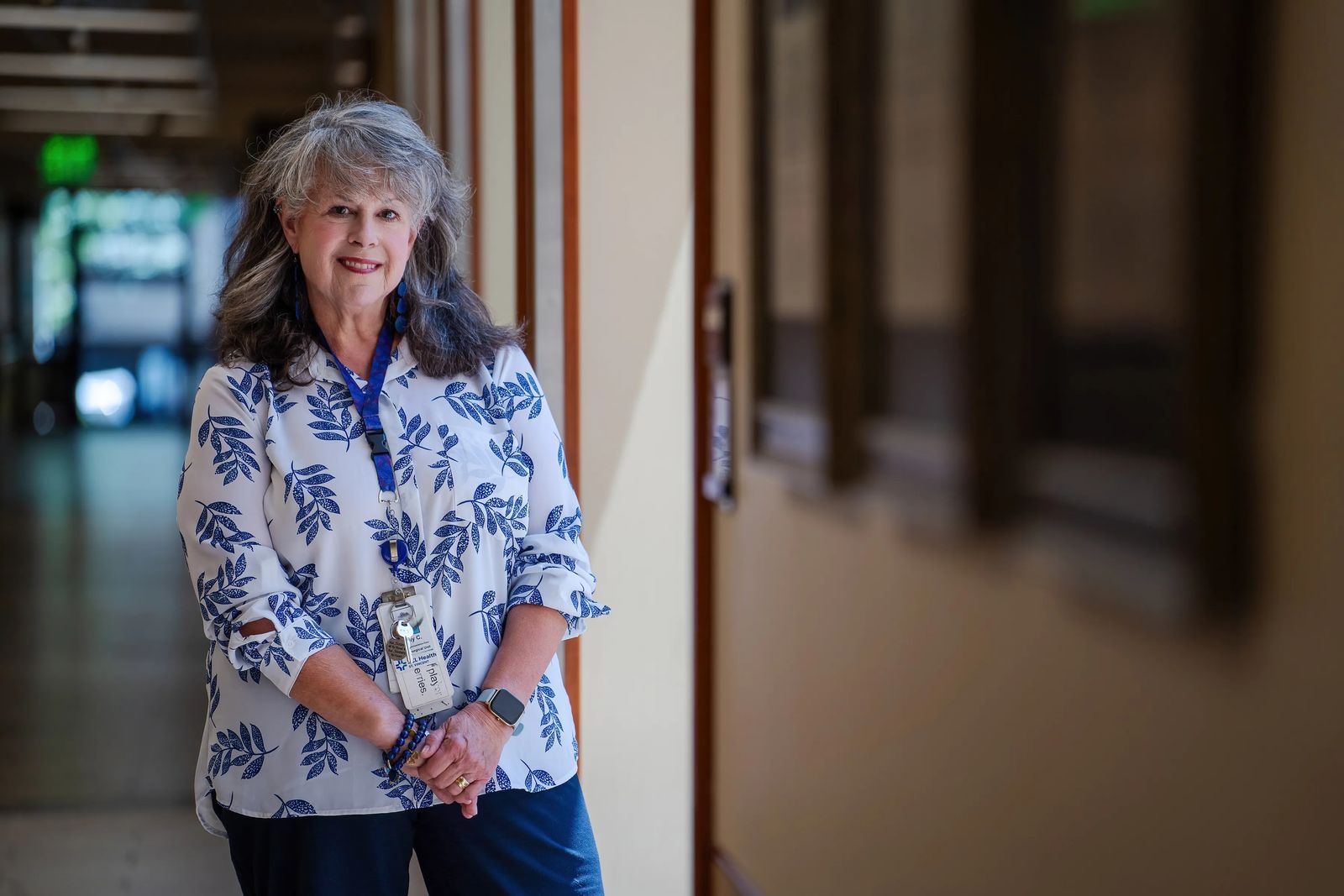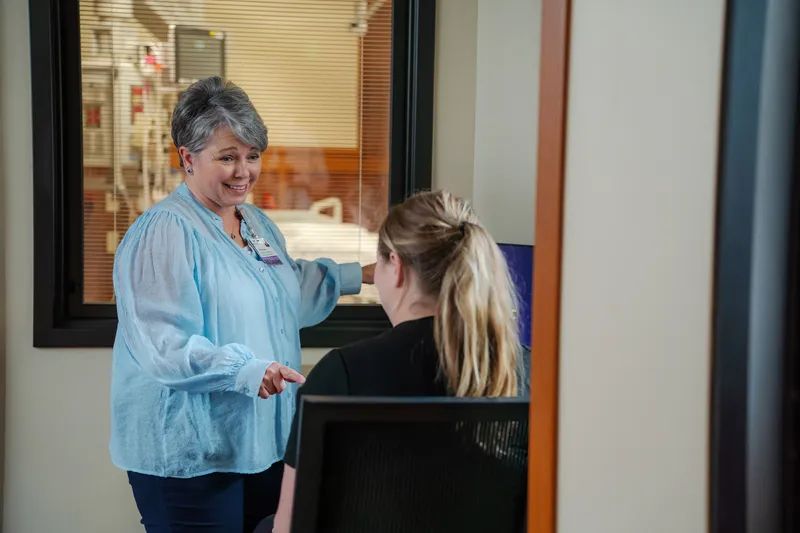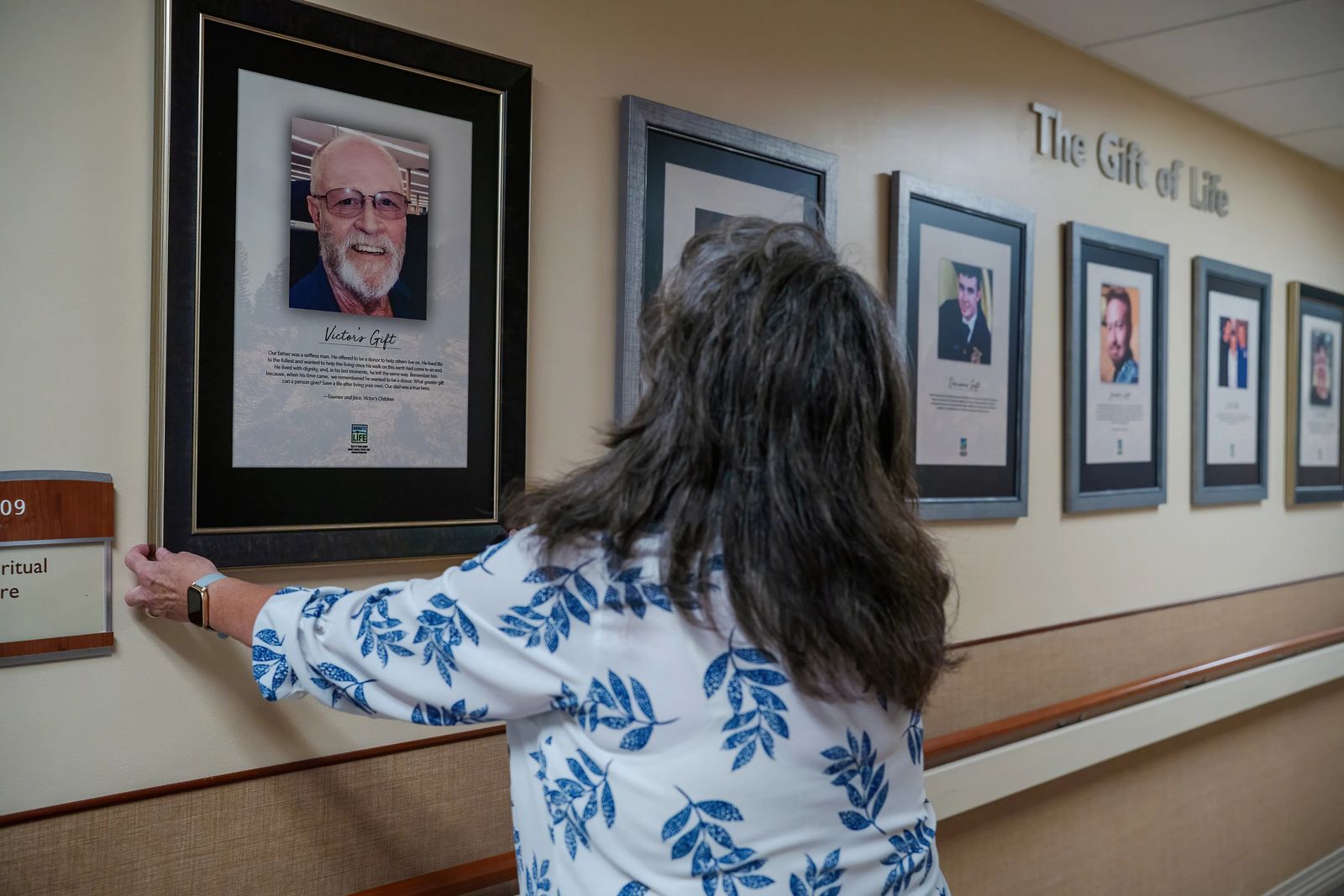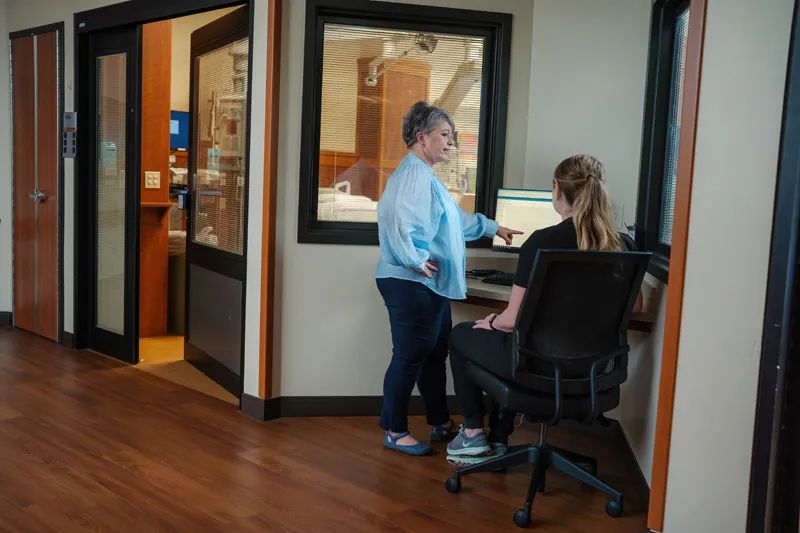
Honoring their wishes
Two women, two hospitals offer hope during depths of despair
There’s a hall in Intermountain Health St. Vincent Regional Hospital that bears witness to a profound sadness and yet seems to breathe a fragile sense of hope.
The sobering “Gift of Life Hall” is lined with the portraits and accompanying stories of an eclectic mix of people — from a young Crow girl to an older gentleman -— that have one thing in common: all have donated organs so that others might live.
The evocative portraits were the brainchild of Penny Clifton, who has chaired St. V’s Donate Life Council for the past 18 years. Besides bringing comfort to the families left behind, the images spark conversations for those who pause to take them all in.
“It’s generated conversations and an awareness for families who have someone in the ICU,” Penny says. “The pictures catch the attention. The families tell the stories.”

Awareness is key for anyone involved in the process of organ donation. Christy Baxter fills a similar role for Billings Clinic, where she co-chairs the organ donation council with Dr. Nathan Allen.
At Billings Clinic, organ donors and their families are venerated with a solemn Honor Walk that takes place as the donor is taken from the ICU to surgery for organ retrieval.
“There’s a line of people along the halls, honoring that loved one,” Christy says.
Penny and Christy both serve as liaisons between the hospital staff, the families and Life Center Northwest, the organ procurement organization that covers donations throughout the northwestern United States. Both women started as nurses in trauma care and both have carved out their roles as organ donation liaisons from their full-time positions at their respective hospitals. Penny is coordinator for the stroke and bariatric surgery programs at St. V’s and Christy is the director of critical care at Billings Clinic.
While the women exude different personalities — Penny is direct and forthright; Christy’s emotions seem closer to the surface — both have been deeply moved by their experiences.
“I think the most difficult situations are likely with the children and younger adults, because it just makes so little sense to be dying at that young age,” Penny says. Christy echoes that sentiment. “It’s so typically young, sudden and tragic,” she says.

Christy and Penny also share stories of hope. Although it’s rare for either to come in contact with organ recipients — organs that are donated in Billings are sent out to save lives across the continent — they both find solace in offering comfort to the surviving families.
“Knowing that you can help them find some peace,” Christy says, “that they can help someone else through their tragedy. …”
Penny tells of one young man named Esley who had registered as an organ donor but had never informed his family.
“They were so grateful to hear his ‘voice’ within his registration, directing them at the end,” she says. “I think that knowledge that you can help someone fulfill a wish, that’s what drives me.”
While both women offer their personal approaches, they touch on common themes. Both stress the gravity of checking the organ donor box on a driver’s license. In Montana, that checkmark is legally binding, regardless of the family’s wishes.
“Where else does a 16-year-old make a legally binding decision?” Christy asks. For that reason, it’s vital that even the youngest family members express their desires before tragedy strikes, they say. To leave wishes unsaid can result in needless strife and pit family members against one another.
Christy faced the most distressing event of her career when an individual who was declared brain dead had checked the box to donate, but later changed his mind without making the change official.
There’s a simple and legal means for adding or removing oneself from the registry (go to RegisterMe.org), she says, but it’s so important to do that and to relay your change of heart to family members.
As liaisons in the process, both women are tasked with alerting the organ procurement agency to potential donor situations. They also train hospital staff on dealing with organ donations. Neither of them arranges the surgeries for retrieving organs, and they do not coordinate the arrival of transplant teams. Restrictions even prevent them from mentioning “organ donation” to potential donor families. Those responsibilities are all reserved for the organ procurement agency.
Instead, Christy and Penny play critical roles in smoothing out the donor process once it has been initiated.
“To help the family go from one place to the next, to go softly and easily, that’s our job,” Penny says.
They find rewards in witnessing how the decision to donate eases the grief process for the survivors.
“I know from personal experience and from nearly two decades of stories that when a loved one donates an organ, tissue or cornea, it is a balm to the grief of those left behind,” Penny says.

The two women are also instrumental in heightening awareness about organ donation, just as they strive to dispel myths. They want everyone to know that the first step in the process never takes place until an individual is declared brain dead or after cardiac death, when there is no hope of survival. In order to preserve organs, the heart is kept beating as the patient remains on a ventilator, but that person could neither live nor breathe on her own.
Both Christy and Penny emphatically assure the public that before donation is even considered, every means possible is taken to preserve the life of anyone in the ICU.
“We never move forward until everything is exhausted,” Christy says.
“No care is shortchanged in order to promote donation,” Penny added. “Ever.”
Penny also speaks to the mistaken belief that age or illness would preclude a person from being an organ donor. “You’d be surprised,” she says. There are criteria that may prevent organ donation, she says, but every death in the hospital is assessed for the potential to donate. And while thousands of people nationwide desperately await kidneys, hearts and livers, there are many more whose lives are improved through donations of tissues, corneas, tendons and bone. Tissues help burn victims and corneas bring sight to the blind, just as tendons and bone fragments are frequently used during surgeries.
“Between 150 and 200 people benefit from each tissue donor,” Penny says.
She also reminds the public that donated organs are removed in such a way that the family can have an open casket, she adds.
In mid-July, Christy had just wrapped up an emotionally draining week. There’d been a surge in tragic deaths that left three families not only reeling from their losses but forcing them to agonize over whether to donate their loved one’s organs in the midst of their grief.
Christy wishes the discussions had taken place before the crisis. “It’s sometimes the one piece of hope they can hold onto,” she says.
Facts & Figures
59 — The percent of Montanans last year who registered as organ donors on their drivers’ licenses, above the national average.
38 — Number of Montanans who donated organs in 2023.
113 — Those 38 donors provided life-saving organs to 113 people.
149 — Number of Montanans currently awaiting a life-saving organ transplant.
100,000 — Number of people nationally who are waiting for organs.











